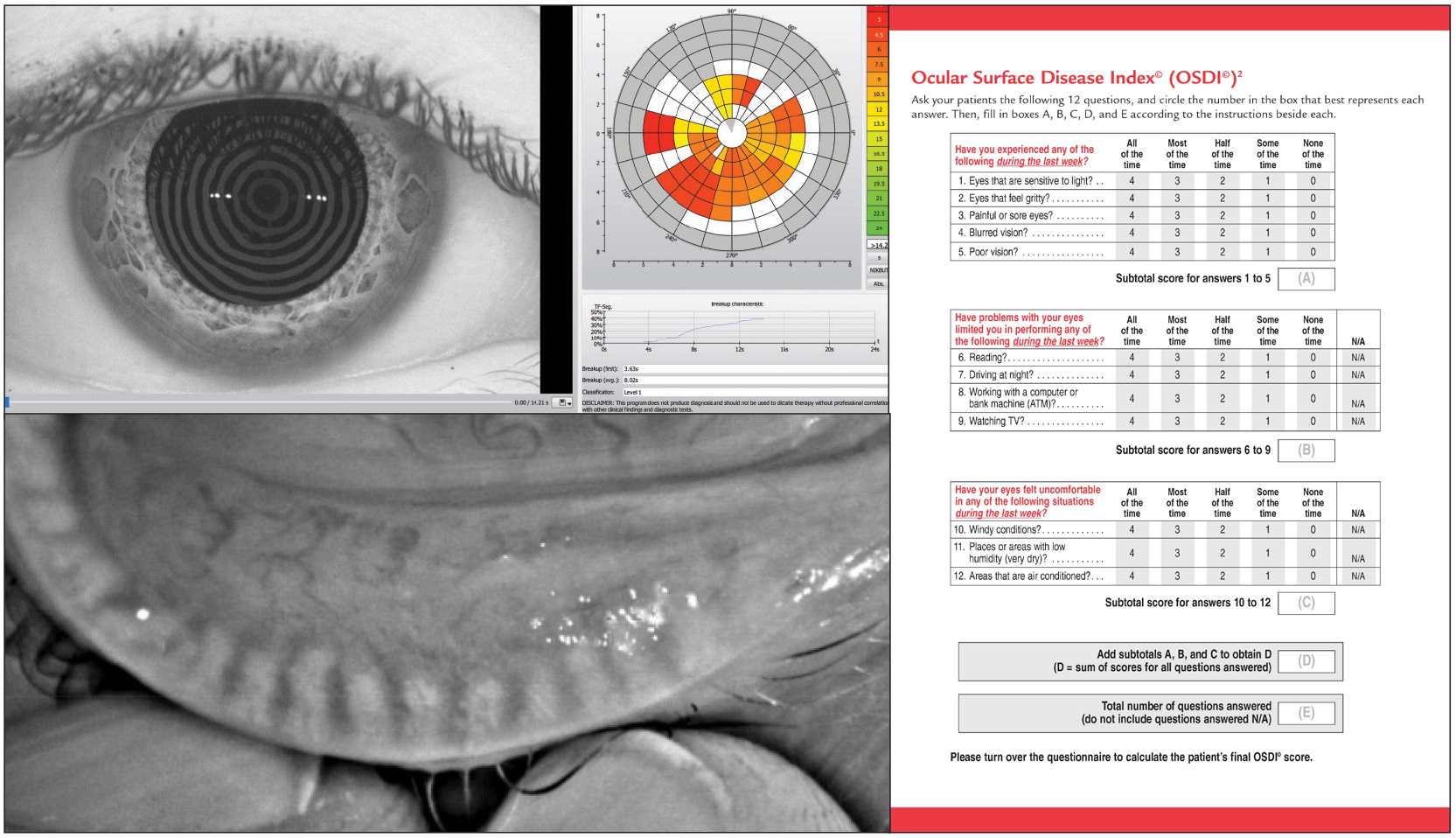 |
Noninvasive breakup time, meibomian gland shortening and performance on the OSDI questionnaire could give you early indications of a dry eye patient who’s about to become symptomatic. Photo: Kambiz Silani, OD (images); Allergan (OSDI). Click image to enlarge. |
Optometrists and ophthalmologists routinely assess tear film characteristics and meibomian gland morphology in detecting dry eye and meibomian gland dysfunction. Previous studies have reported on associated changes in patients diagnosed with dry eye. However, these changes also yield insights into subjects with preclinical dry eye and more diligence there could help identify incipient cases more often. A recent study compared tear film and meibomian gland changes in patients with dry eye symptoms but no signs with controls, as defined by the ocular surface disease index (OSDI) score.
A total of 150 subjects were enrolled in this prospective cross-sectional study. All participants completed the OSDI questionnaire and the computer vision syndrome questionnaire. Tear film tests such as noninvasive breakup time, tear meniscus height, lipid layer pattern, Schirmer’s test and corneal staining were performed. Images were captured from both the upper and the lower eyelids to study the meibomian gland morphology. Tear meniscus height, meibomian gland length, thickness, loss and tortuosity were measured. Subjects were differentiated into two groups based on an OSDI threshold score of at least 13 as preclinical dry eye or controls.
Among the subjects, 43.6% were categorized as preclinical dry eye and 56.4% as controls. In the preclinical dry eye group, a significant reduction in noninvasive tear breakup time and meibomian gland length of the lower lid was found when compared with controls. Tear meniscus height, Schirmer’s test and meibomian gland width did not vary among both groups. Similarly, meibomian gland loss and tortuosity score were higher in the preclinical dry eye group but did not show any statistical significance.
The majority of young patients presenting for their regular eye examination may have preclinical dry eye based on their OSDI score. Hence, it is important to administer the OSDI questionnaire and perform noninvasive tests and imaging of the meibomian glands as part of the routine ocular evaluation, the study authors concluded in their paper.
Fatima A, Vadla P, Konda N. Changes in the tear film and meibomian gland morphology between preclinical dry eye and normal subjects represented by ocular surface disease index scores. Exp Eye Res. July 14, 2022. [Epub ahead of print]. |


